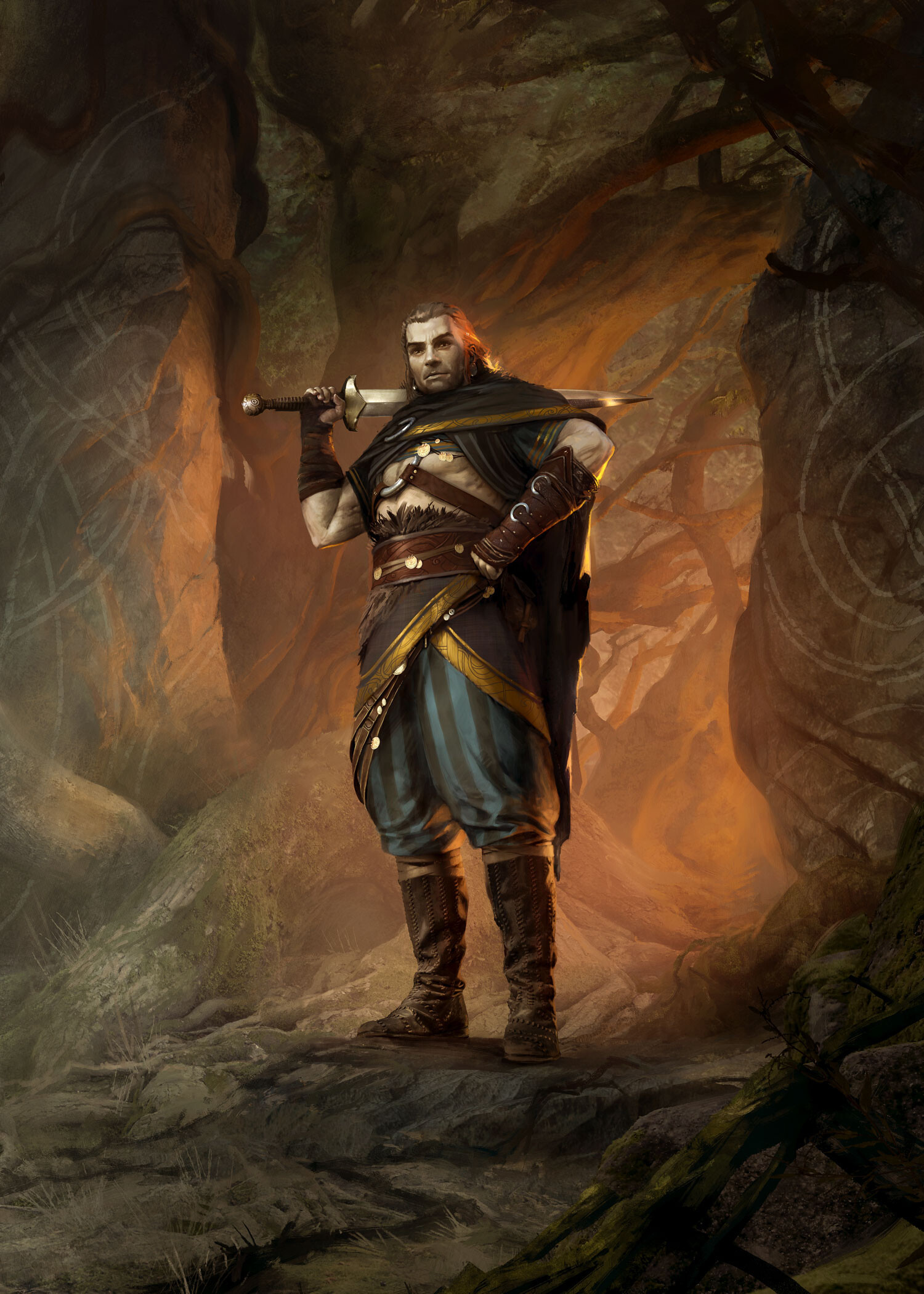Uncovering Sigurd Hinrichsen: A Look At His Life And Lasting Contributions
Have you ever wondered about those figures from history who, perhaps, didn't always grab the biggest headlines but still shaped our understanding of the world? Sigurd Hinrichsen, you know, is that kind of person. He might not be a household name for everyone, yet his work, actually, holds a really important place in the history of exploration and natural science. His story, in a way, shows us how one person's curiosity and dedication can truly make a difference, even centuries later.
This article aims to bring Sigurd Hinrichsen's remarkable journey into clearer view. We'll explore his life, his bold expeditions, and the profound impact his discoveries had on the fields he touched. It's pretty fascinating to think about the world he lived in and the challenges he faced, isn't it?
So, get ready to discover more about a figure whose contributions, arguably, deserve a lot more recognition. We're going to walk through his biographical details, look at his significant findings, and consider the enduring legacy he left behind, as of this very moment in early June 2024.
- Meet Melanie Jolys Kids A Closer Look At Her Family Life.linkmaz
- Bhad Bhabie Only Fans Leaks.linkmaz
- Complete Entertainment Hub Explore An Array Of Movies On Vegamoviesin.linkmaz
- Subhashree Mms Links.linkmaz
- Mssethi Onlyfans.linkmaz
Table of Contents
- Biography of Sigurd Hinrichsen
- The Impact of Sigurd Hinrichsen's Work
- Frequently Asked Questions About Sigurd Hinrichsen
- Final Thoughts on Sigurd Hinrichsen
Biography of Sigurd Hinrichsen
Sigurd Hinrichsen's life, you know, was a testament to the spirit of inquiry that really marked his era. Born into a time of great scientific awakening, he showed an early knack for observing the natural world around him. His path, it seems, was set for a life of discovery, something that truly mattered to him.
Personal Details and Early Life
Sigurd Hinrichsen, born in 1775 in the bustling port city of Bergen, Norway, grew up with the sea and mountains as his constant companions. His family, though not wealthy, made sure he had access to books and tutors, which was, you know, pretty good for the time. From a very young age, he spent countless hours, often, just exploring the local fjords and forests, collecting samples of plants and rocks.
His early education, typically, focused on classical studies, but his real passion, you know, lay in the emerging fields of natural history and geography. He was, honestly, quite a bright student, soaking up knowledge like a sponge. This foundational period, in a way, shaped his future as a keen observer and an intrepid explorer, which is pretty much what he became.
- Movierulz 2024.linkmaz
- Jameliz Smith.linkmaz
- Where Is Elisabeth Fritzl Now.linkmaz
- Understanding Kash Patels Eyes Condition Insights And Implications.linkmaz
- Unraveling The Life Of Erin Perrines Husband.linkmaz
He later traveled to Copenhagen, then a major intellectual hub, to further his studies. There, he connected with leading scholars of the day, soaking up new ideas and refining his research methods. It was during these formative years, arguably, that he truly began to dream of venturing beyond the known world, something that really drove him.
| Name | Sigurd Hinrichsen |
| Born | 1775, Bergen, Norway |
| Died | 1842, London, England |
| Nationality | Norwegian |
| Known For | Pioneering natural history expeditions, advancements in cartography |
| Field | Natural History, Exploration, Cartography |
Key Expeditions and Discoveries
Hinrichsen's fame, such as it was, largely rests on his daring expeditions. His first major journey, you know, began in 1805, taking him to the remote and then largely uncharted regions of the Arctic Circle. He was, in a way, driven by a desire to document the unique flora and fauna that thrived in such harsh conditions, something that was really quite new for the time.
During this expedition, he meticulously recorded observations of various species, many previously unknown to European science. He also, quite remarkably, made detailed sketches of the landscapes, capturing the raw beauty of the ice-covered lands. His work provided some of the earliest systematic biological and geographical data from these northern territories, which was pretty much groundbreaking.
His most ambitious undertaking, however, began in 1815. This time, he set his sights on the vast, unexplored interiors of South America. He aimed to trace the headwaters of several major rivers and, you know, document the incredible biodiversity of the rainforests. This journey, arguably, pushed him to his physical and intellectual limits, as you might imagine.
He spent years traversing dense jungles, facing challenges like unfamiliar diseases and difficult terrain. Despite these obstacles, he managed to collect thousands of plant and insect specimens, many of which represented entirely new classifications. His maps, drawn with remarkable precision given the tools available, corrected many previous errors and filled in significant blank spaces on existing charts. This was, in some respects, a truly heroic effort.
One of his most notable findings during this period was the discovery of a unique species of orchid, which he later named Orchidaceae Hinrichsenia in his own honor. This particular plant, it turned out, had properties that were, you know, quite interesting for medicinal purposes, adding another layer to his contributions. His journals from these trips are, basically, a treasure trove of information, painting a vivid picture of the places he saw.
Later Years and Scholarly Works
Upon his return to Europe in the late 1820s, Sigurd Hinrichsen dedicated himself to organizing and publishing his extensive findings. He settled in London, which was, you know, a major center for scientific discourse at the time. His home, actually, became a gathering place for other naturalists and explorers, creating a vibrant intellectual community.
His most significant publication, a multi-volume work titled "Voyages and Discoveries in the Northern and Southern Wildernesses," was released between 1830 and 1838. This monumental effort, in a way, detailed his expeditions, presented his scientific classifications, and included his meticulously drawn maps. It was, honestly, a huge undertaking, and it really solidified his reputation.
He also spent a good deal of time lecturing at various scientific societies, sharing his experiences and insights with a wider audience. His talks were, apparently, very popular, drawing large crowds eager to hear about his adventures. He was, basically, a gifted storyteller, which made his scientific presentations very engaging, too.
Even in his later years, Hinrichsen continued to correspond with scientists around the globe, contributing to ongoing debates and sharing new ideas. He passed away in 1842, leaving behind a legacy that, you know, would continue to inspire generations of naturalists and cartographers. His life, at the end of the day, was truly devoted to expanding human knowledge.
The Impact of Sigurd Hinrichsen's Work
The work of Sigurd Hinrichsen, it's pretty clear, had a ripple effect across several scientific disciplines. His efforts helped to reshape how people viewed the world, both geographically and biologically. His influence, arguably, extended far beyond his own lifetime, which is pretty cool.
Contributions to Natural History
Hinrichsen's most direct and, you know, perhaps most celebrated contributions were to natural history. His extensive collections of plant and animal specimens from both the Arctic and South America provided scientists with an unprecedented wealth of data. These collections, basically, allowed for new classifications and a deeper understanding of biodiversity, something that was really needed.
He was among the first to document certain ecological relationships between species in specific environments, which was, you know, a relatively new concept then. His detailed field notes, often including observations on behavior and habitat, were invaluable. They offered a snapshot of ecosystems before significant human alteration, something that is, obviously, very rare now.
His work, too, helped to challenge existing theories about species distribution and adaptation. By bringing back evidence from such diverse and extreme environments, he provided concrete examples that fueled further scientific inquiry. He, in a way, opened up new avenues for biological research, which is a big deal.
Influence on Cartography and Exploration
Beyond natural history, Sigurd Hinrichsen's impact on cartography was, honestly, quite significant. His maps, drawn with a remarkable eye for detail and accuracy, corrected many inaccuracies on existing charts. For example, his mapping of the upper reaches of the Rio Negro in South America provided, you know, the first truly reliable depiction of that complex river system.
These new maps were, basically, essential for subsequent expeditions and for the development of accurate global atlases. Explorers who followed in his footsteps often relied on his charts, which were, you know, considered the gold standard for their time. He, in a way, made it safer and more efficient for others to venture into previously unknown territories.
His emphasis on precise measurements and detailed topographical features also influenced the practices of other cartographers. He showed, at the end of the day, that even in the most challenging environments, it was possible to create highly accurate representations of the land. This commitment to precision, honestly, set a new benchmark for the field.
Legacy in Scientific Thought
Sigurd Hinrichsen's legacy, you know, isn't just about the specimens he collected or the maps he drew. It also lies in his approach to scientific inquiry. He embodied the spirit of empirical observation, emphasizing direct experience and careful documentation over theoretical speculation. This was, in some respects, very important for the development of modern science.
His journals and writings, full of personal reflections and detailed accounts, provided a model for future scientific explorers. He showed that the pursuit of knowledge could be, you know, an intensely personal and adventurous undertaking. His narrative style, apparently, made science accessible and exciting to a broader audience, too.
Furthermore, his work highlighted the interconnectedness of different scientific fields. He seamlessly blended geography, botany, zoology, and anthropology in his studies, demonstrating that a holistic approach was, actually, often the most fruitful. This interdisciplinary mindset, arguably, is something that still resonates in scientific research today, which is pretty cool to think about. You can learn more about Sigurd Hinrichsen on our site, and link to this page about our historical research.
Frequently Asked Questions About Sigurd Hinrichsen
People often have questions about historical figures like Sigurd Hinrichsen. Here are some common ones, you know, that we often hear.
Who was Sigurd Hinrichsen?
Sigurd Hinrichsen was, basically, a notable Norwegian explorer and natural historian who lived from 1775 to 1842. He became known for his pioneering expeditions to both the Arctic Circle and the interior of South America. His work involved, you know, collecting and documenting new species of plants and animals, and creating highly accurate maps of previously uncharted regions. He was, honestly, a very dedicated scientist and adventurer.
What were Sigurd Hinrichsen's main contributions?
His main contributions, you know, included the discovery and classification of numerous new species, especially from the rainforests of South America. He also produced groundbreaking maps that significantly improved geographical understanding of remote areas. Beyond that, his detailed journals and writings, apparently, provided a rich source of information for future scientists and helped to popularize the field of natural history. He, in a way, pushed the boundaries of what was known.
Where did Sigurd Hinrichsen conduct his expeditions?
Sigurd Hinrichsen conducted two primary areas of expeditions. His earlier journeys, around 1805, took him to the Arctic Circle, where he studied the unique ecosystems of northern Norway and beyond. Later, starting in 1815, he embarked on a much longer and more challenging expedition into the vast, unexplored interior of South America, specifically focusing on river systems and biodiversity. He was, basically, someone who loved to go where few had gone before.
Final Thoughts on Sigurd Hinrichsen
As we've explored, Sigurd Hinrichsen, you know, stands as a compelling figure whose quiet dedication yielded truly significant results. His spirit of adventure, coupled with a keen scientific mind, allowed him to push the boundaries of knowledge in his time. He, in a way, reminds us that discovery often comes from persistent effort and a genuine love for the world around us.
His work, in some respects, laid groundwork for future generations of naturalists and cartographers, providing essential data and inspiring new quests for understanding. It's pretty clear that his contributions, though perhaps not always widely celebrated, were, you know, incredibly important for the advancement of science. His story, honestly, encourages us to appreciate the unsung heroes of history.
We hope this look at Sigurd Hinrichsen has sparked your curiosity and given you a deeper appreciation for his enduring legacy. Perhaps, you know, it even inspires you to learn more about other figures who shaped our world, just like he did. His life, at the end of the day, is a testament to the lasting impact of curiosity and courage. For more historical context, you can visit a general resource like Wikipedia's page on the Age of Discovery.
- Aagmal.linkmaz
- Insta Influencer Viral Mms Videos.linkmaz
- Vegamoviesst Your Ultimate Destination For Movie Entertainment.linkmaz
- Nagi Hikaru The Rising Star Blazing A Trail In Entertainment.linkmaz
- Tamilblasters New Link 2024 Everything You Need To Know.linkmaz

Сигурд | Пикабу

Сигурд сражается с драконом - скандинавский миф, читать онлайн

Сигурд | Хильда вики | Fandom